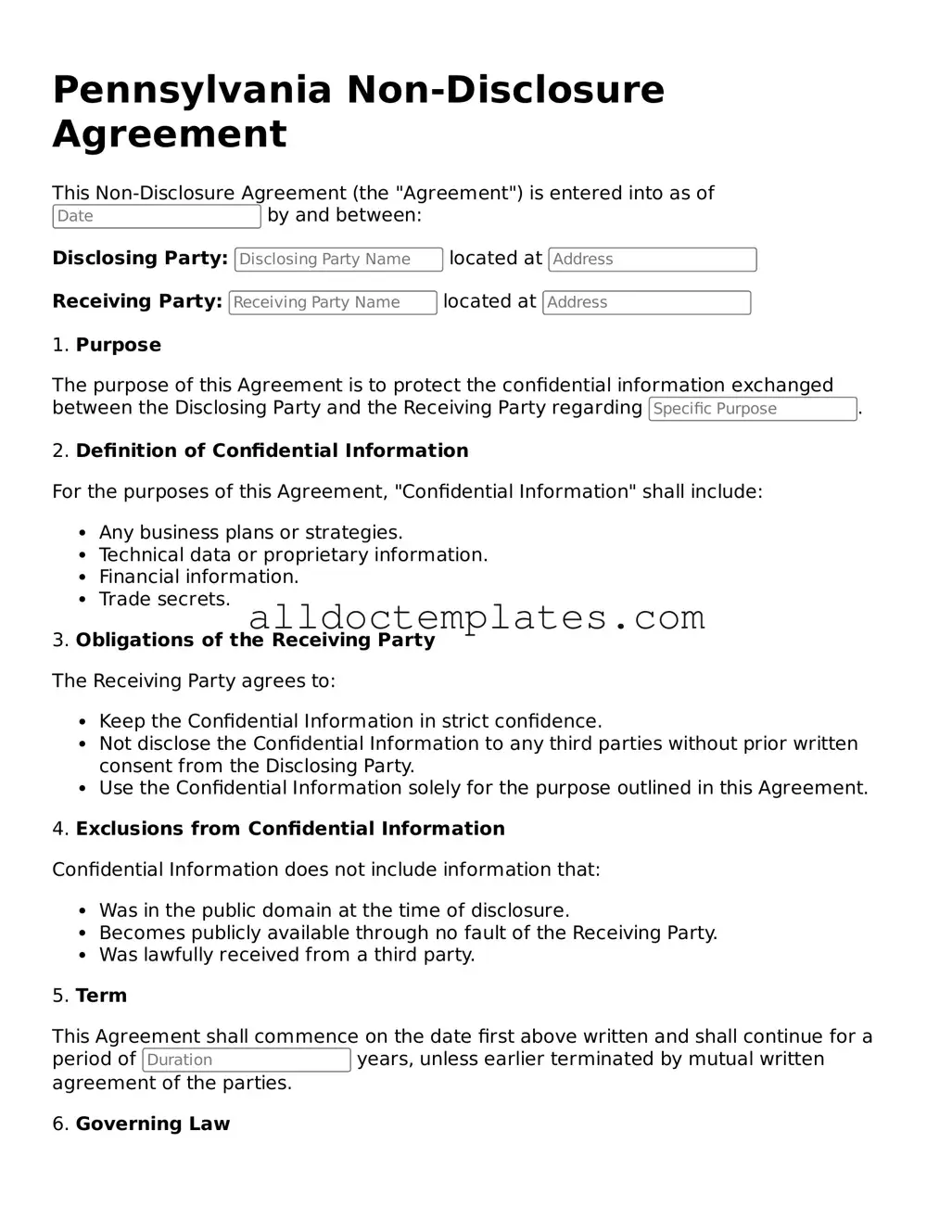Free Non-disclosure Agreement Document for Pennsylvania State
A Pennsylvania Non-disclosure Agreement (NDA) is a legal document designed to protect sensitive information shared between parties. This form establishes a confidential relationship, ensuring that proprietary information remains private. By signing an NDA, individuals and businesses can safeguard their ideas, trade secrets, and other valuable data from unauthorized disclosure.
Get Your Form Now
